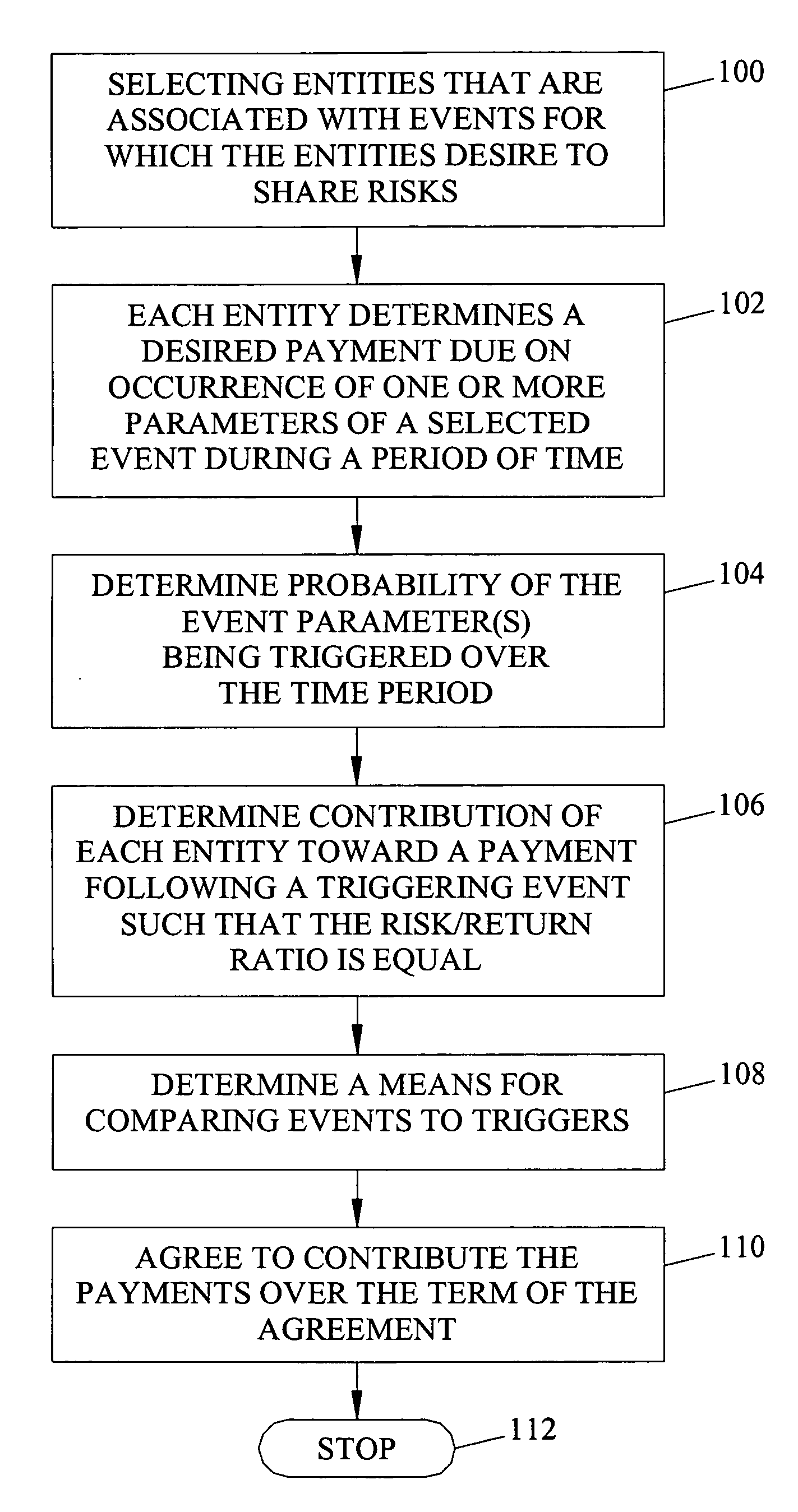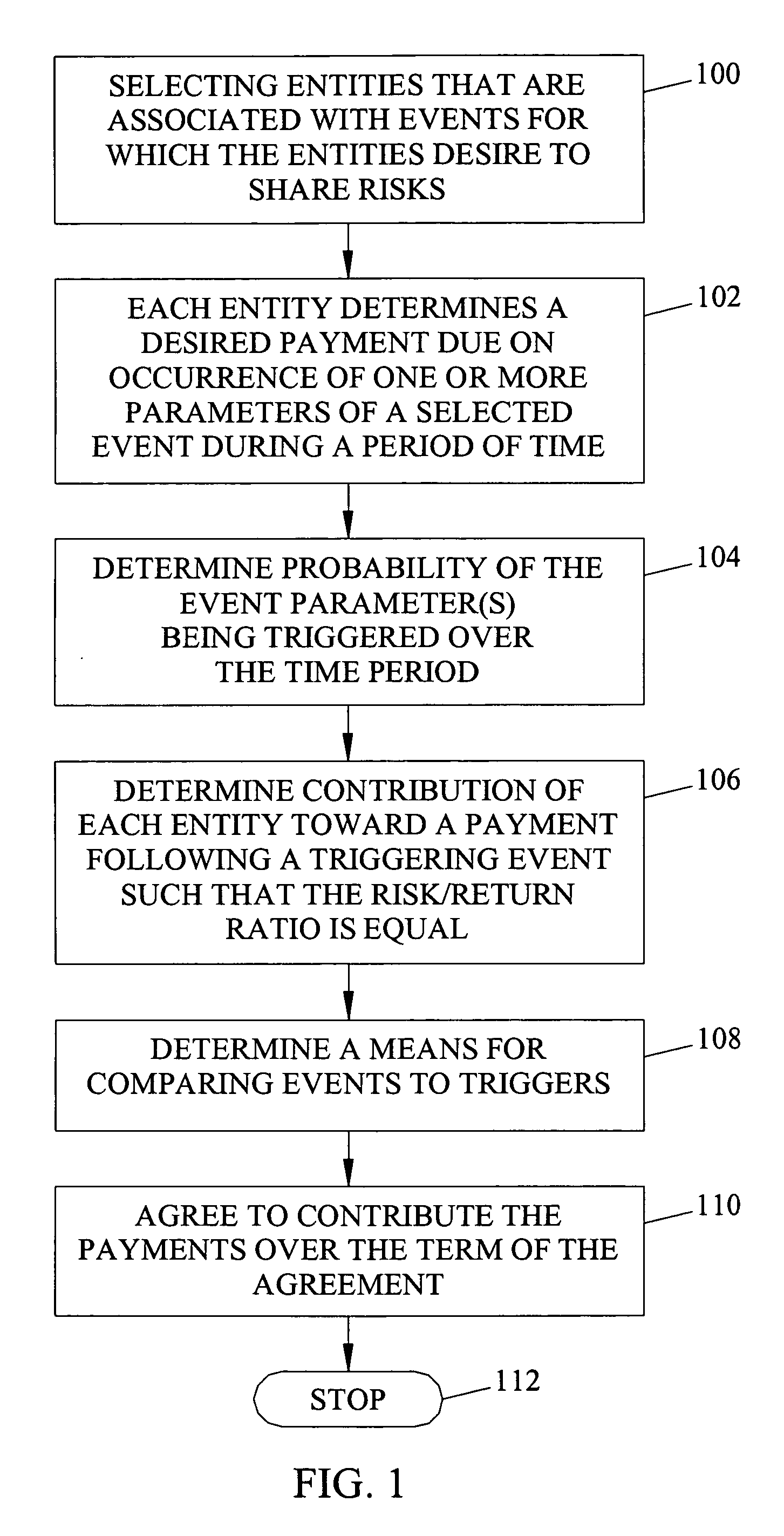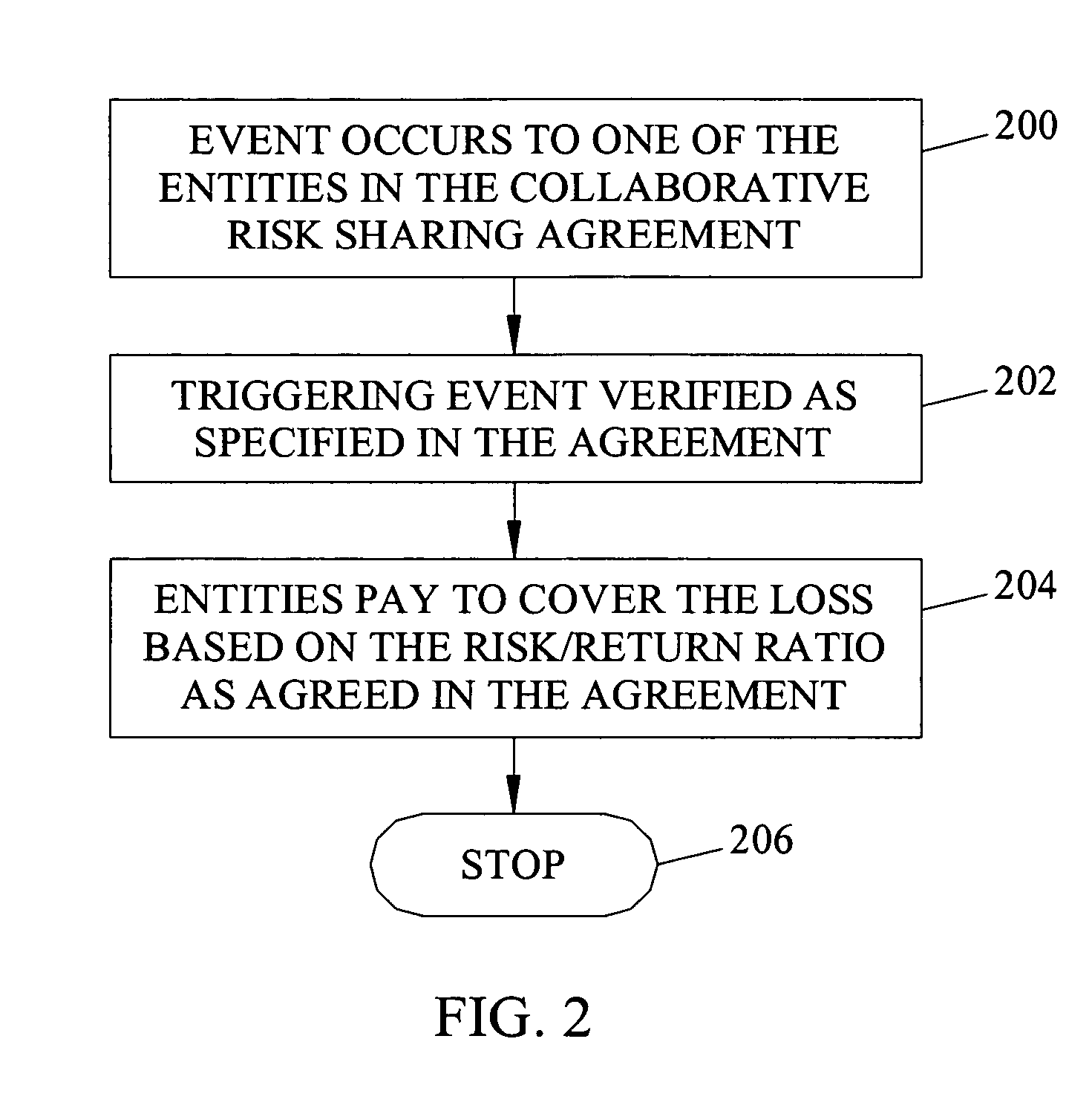Collaborative risk sharing methods and related products
a risk sharing and collaborative technology, applied in the field of insurance methods, can solve the problems of insurers incurring overhead expenses, cost, settlement and solvency, and the cost of the risk transfer
- Summary
- Abstract
- Description
- Claims
- Application Information
AI Technical Summary
Problems solved by technology
Method used
Image
Examples
Embodiment Construction
[0018] Collaborative risk sharing products and methods according to the subject matter provided herein may be utilized by a group of persons and / or business entities desiring to share risks among themselves. Individuals or business entities may enter into an agreement to provide payments to one another in the event that one of the entities suffers a loss due to a specified event, such as a hurricane or earthquake. The method and products described herein can provide a means for calculating a risk / return ratio for each entity. Further, the methods and products described herein can provide a means for determining the payment or receipt amount for each entity.
[0019] The use of collaborative insurance products and methods according to the subject matter provided herein can provide benefits over traditional insurance forms in terms of cost, settlement, and solvency. Regarding cost, the collaborative risk sharing products and methods according to the subject matter described herein can e...
PUM
 Login to View More
Login to View More Abstract
Description
Claims
Application Information
 Login to View More
Login to View More - R&D
- Intellectual Property
- Life Sciences
- Materials
- Tech Scout
- Unparalleled Data Quality
- Higher Quality Content
- 60% Fewer Hallucinations
Browse by: Latest US Patents, China's latest patents, Technical Efficacy Thesaurus, Application Domain, Technology Topic, Popular Technical Reports.
© 2025 PatSnap. All rights reserved.Legal|Privacy policy|Modern Slavery Act Transparency Statement|Sitemap|About US| Contact US: help@patsnap.com



